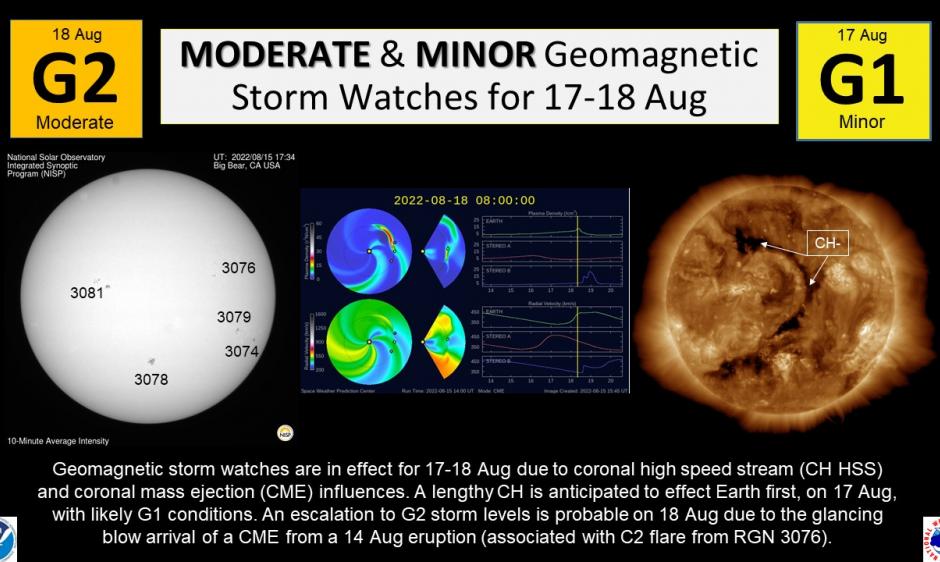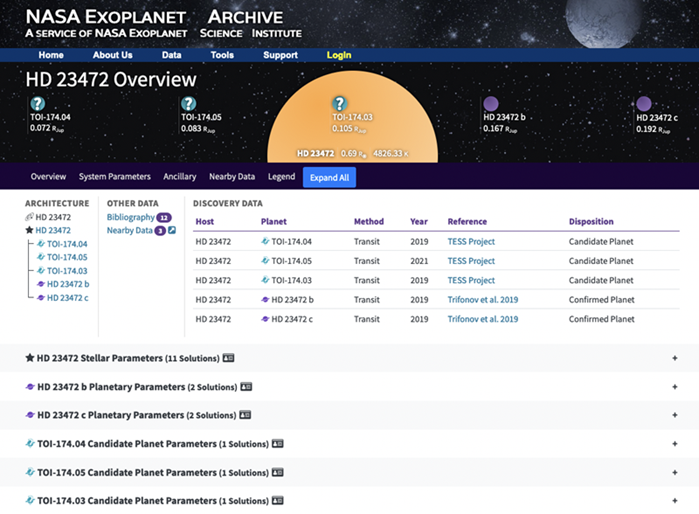Astronomy at the Beach 2022
I am on the board of the Great Lakes Association of Astronomy Clubs (GLAAC) – a loose association of amateur astronomy clubs and educational institutions in Southeastern Michigan who have banded together to provide enjoyable, family-oriented activities that focus on astronomy and space sciences. GLAAC organizes and runs the Astronomy at the Beach event – 2022 will be our 26th year!
In 2019, the year before COVID struck, we had nearly 5000 attendees! We transitioned to an online event for two years – we even got Br. Guy and David Levy to speak for us!
This year, we are returning to an in-person astronomy event, with telescopes and astronomers on the field in September!

Our keynote speaker this year is Dr. Nicolle Zellner – a planetary scientist, professor of physics at Albion College in Albion, Michigan, and a volunteer NASA/JPL Solar System Ambassador. She will be speaking about the involvement of people from Michigan in the Apollo program, and life in the universe.
Members of local astronomy clubs will be set up a tables to engage the public, and in addition to the keynote speaker, we will have presentations on the James Webb Space Telescope, and the Artemis mission!

I recently had knee surgery, so I will not be able to attend the live event. I will, however, be hosting a couple Zoom sessions during the event:
- A Tour of the Solar System – I’ll visit all the usual places, and several unusual ones in the solar system and beyond using SpaceEngine. Note: I’d really like to give this presentation to a LOT of classrooms this year!
- A Mission to Mars – I’ll design, build, launch, fly and land a probe to Mars in Kerbal Space Program. Along the way, I’ll show some basic orbital mechanics. Hilarity is a given.


Morning: Venus and the constellation Orion appear low above the eastern horizon before dawn – Orion appearing a bit higher, and Venus appearing a bit lower than last week.

Morning: The Moon appears between Mars and the Pleiades high in the southeastern predawn sky on April 19th.

Morning: The Moon appears near the star Pollux in the eastern predawn sky on August 23rd.

Evening: Saturn appears above the southeastern Horizon after sunset all week; the planet appears high to the south at midnight, and it sets in the southwest with the dawn.

Evening: Jupiter rises in the east shortly after sunset, appears very high to the south at 4:00 AM, and vanishes into the dawn high above the southwest horizon.


- The Moon is a Waning Gibbous – rising after sunset, visible high in the sky after midnight, and visible to the southwest after sunrise.
- The Third Quarter Moon occurs on August 19th – rising around midnight, and visible to the south after sunrise.
- After August 19th, the Moon will be a Waning crescent – visible low to the east before sunrise. Watch for earthshine!

If you click on the Moon image above, or click this link, you will go to NASA’s Moon Phase and Libration, 2022 page – it will show you what the Moon looks like right now. If you click the image on that page, you will download a high-rez TIFF image annotated with the names of prominent features – helpful for logging your lunar observations! (See below)
Moon News

The Sun has five named sunspots, again – one will be rotating out of view soon, another in a couple days. I’m noticing a LOT of plage areas near AR3079/AR3074, and more rotating into view (lower left side).
Spaceweather.com says: “Sunspot AR3078 has a delta-class magnetic field that poses a threat for X-class solar flares.” And “Sunspot AR3078 has developed an unstable delta-class magnetic field that harbors energy for strong solar flares. NOAA forecasters say there is a 30% chance of M-class flares and a 10% chance of X-flares today. Any explosions will be geoeffective as the sunspot is almost directly facing Earth.”

NOAA: G1-G2 (MINOR-MODERATE) STORM WATCHES FOR 17-18 AUGUST

Videos courtesy of NASA/SDO and the AIA, EVE, and HMI science teams.
You can view the Sun in near real-time, in multiple frequencies here: SDO-The Sun Now.
You can create your own time-lapse movies of the Sun here: AIA/HMI Browse Data.
You can browse all the SDO images of the Sun from 2010 to the present here: Browse SDO archive.
Amateur Solar Astrophotography
Coronado Solarmax 3 Double Stack
Barlow 2x
Cemax Zwo Asi 178 MMClaudio Ciceri
Solar Corona
Solar wind speed is 370.1 km/sec ▼ with a density of 5.29 protons/cm3 ▼ at 1120 UT.
Click here to see a near real-time animation of the corona and solar wind from the Solar & Heliospheric Observatory (SOHO).
Sun News:

- Near-Earth Objects (NEOs) discovered this month: 30, this year: 1570, all time: 29,380 (+11)
- Potentially Hazardous Asteroids (PHAs): 2280 (-1 updated 2022-08-16)
- Total Minor Planets discovered (MPC): 1,217,359 (-65 updated 2022-08-16)
WGSBN Bulletin 2, #11 is available – with several newly named asteroids!
Upcoming Earth-asteroid encounters:
| Asteroid | Date(UT) | Miss Distance | Velocity (km/s) | Diameter (m) |
| 2022 PJ1 | 2022-Aug-16 | 11 LD | 5.9 | 19 |
| 2022 PW | 2022-Aug-16 | 1.4 LD | 7.5 | 30 |
| 2022 PC | 2022-Aug-18 | 16.5 LD | 4.1 | 61 |
| 2019 AV13 | 2022-Aug-20 | 13.8 LD | 9.2 | 135 |
| 2020 QW3 | 2022-Aug-22 | 14.1 LD | 18.1 | 30 |
| 2015 QH3 | 2022-Aug-22 | 5.6 LD | 7 | 14 |
| 2017 BU | 2022-Aug-29 | 15.8 LD | 7 | 32 |
| 2021 CQ5 | 2022-Sep-01 | 8.7 LD | 13.5 | 7 |
| 2008 RW | 2022-Sep-12 | 17.5 LD | 10.2 | 98 |
| 2020 PT4 | 2022-Sep-15 | 19.7 LD | 10.8 | 39 |
| 2016 HF2 | 2022-Sep-29 | 19.2 LD | 5.6 | 21 |
| 2018 ER1 | 2022-Oct-02 | 14.7 LD | 4 | 27 |
| 2018 VG | 2022-Oct-05 | 18.5 LD | 6.7 | 12 |
| 2021 TJ10 | 2022-Oct-06 | 19.6 LD | 8.1 | 6 |
| 2006 SG7 | 2022-Oct-07 | 16.7 LD | 18.4 | 93 |
| 2013 TJ6 | 2022-Oct-07 | 11.7 LD | 14.4 | 32 |
Asteroid News:

On August 15, 2022, the NASA All Sky Fireball Network reported 26 fireballs!
(10 sporadics, 15 Perseids, 1 southern iota Aquariid)

Fireball News:
If you see a bright meteor or a fireball, please REPORT IT to the American Meteor Society and the International Meteor Organization!

Position of the planets & several spacecraft in the inner solar system on August 16th:

Position of the planets in the middle solar system – August 2022:

Position of the planets in the outer solar system first half of 2022:

Solar System News
Oh my GOSH! I never mentioned this last week – how COULD I have missed this???

See a list of current NASA missions here: https://www.jpl.nasa.gov/missions?mission_status=current

ex·o·plan·et /ˈeksōˌplanət/, noun: a planet orbiting a star other than the Sun.
* Confirmed Planets Discovered by TESS refers to the number planets that have been published in the refereed astronomical literature.
* TESS Project Candidates refers to the total number of transit-like events that appear to be astrophysical in origin, including false positives as identified by the TESS Project.
* TESS Project Candidates Yet To Be Confirmed refers to the number of TESS Project Candidates that have not yet been dispositioned as a Confirmed Planet or False Positive.
Exoplanet News:
August 12, 2022
Over 5,000 TOIs Added to System Overview Pages
We’ve added more than 5,000 TESS Objects of Interest (TOIs) to new or existing System Overview pages to make it easier to identify systems with candidate planets for follow-up investigation.
Systems with known confirmed planets now display companion TOIs on their respective System Overview pages. New System Overview pages have been created for TOIs that are not part of a known planetary system.
For example, the HD 23472 System Overview shows two confirmed planets with three candidate planets from the TESS project—making it a potential five-planet system.

All These Worlds
An ever-growing slideshow with exoplanet images I’ve created for these posts:

SpaceWeather.com Realtime Aurora Gallery: https://spaceweathergallery.com/aurora_gallery.html
Latest Aurora Oval Forecast

- Visit an International Dark Sky Park: https://www.darksky.org/our-work/conservation/idsp/parks/
- If you live in Michigan, visit the Michigan Dark Skies site: https://sites.lsa.umich.edu/darkskies/

Beautiful Universe – The Helix Nebula in IR
Messier Tour: M26
Messier 26 (M26) is an open cluster located in the constellation Scutum. The cluster has an apparent magnitude of 8.0. Messier 26 lies at an approximate distance of 5,000 light years from Earth. Its designation in the New General Catalogue is NGC 6694. The cluster occupies an area of 15 arc minutes, corresponding to a linear diameter of 22 light years.
The brightest star in M26 has a visual magnitude of 11.9 and the spectral classification B8. The estimated age of the cluster is 89 million years. M26 can be a challenge to find and does not provide as impressive a view as the nearby Wild Duck Cluster (M11). – messier-objects.com

M26 lies only a degree to the southeast of Delta Scuti, a peculiar giant star with the spectral classification F2, that serves as a prototype for a class of pulsating variable stars known as the Delta Scuti variables. The star has an average visual magnitude of 4.71. It is one of the two relatively bright, naked-eye stars near M26. The other star, Epsilon Scuti, has an apparent magnitude of 4.88 and lies slightly north of Delta Scuti.
Messier 26 can also be found by first locating the bright Altair in the constellation Aquila and extending the line formed by the stars that mark the celestial eagle’s back in the direction of the Teapot in Sagittarius. The cluster is not visible to the naked eye, but will appear as a compression of stars in 10×50 binoculars. Small telescopes will reveal a compact star cluster, and 6-inch and 8-inch telescopes will resolve about 25 brightest stars. The cluster contains a total of about 90 members. The best time of year to observe it is from June to September. – messier-objects.com

Location of M26 in the Milky Way

Here’s my obligatory “What would a planet look like if it were near that Messier object” pic:
I spent quite a bit of time playing around in this system in SpaceEngine – there were a lot of planets! A couple gas giants with several moons – all of them very hot and vaporizing. There was an inner planet with a comet-like tail too.


Cover Image: Messier 26. Credit: Hillary Mathis, Vanessa Harvey, REU program/NOIRLab/NSF/AURA
Messier Object List: [Link]
Software Apps used for this post:
NASA Eyes on the Solar System: an immersive 3D solar system and space mission simulator – free for the PC /MAC.
Stellarium: a free web-based planetarium app. It’s a great tool for planning observing sessions. Latest update released on July 7, 2022.
SpaceEngine – Explore the universe in 3D and VR! Latest update released on July 6, 2022.
Worldwide Telescope – operated by the American Astronomical Society (AAS). Latest update released on March 31, 2022.



























































































